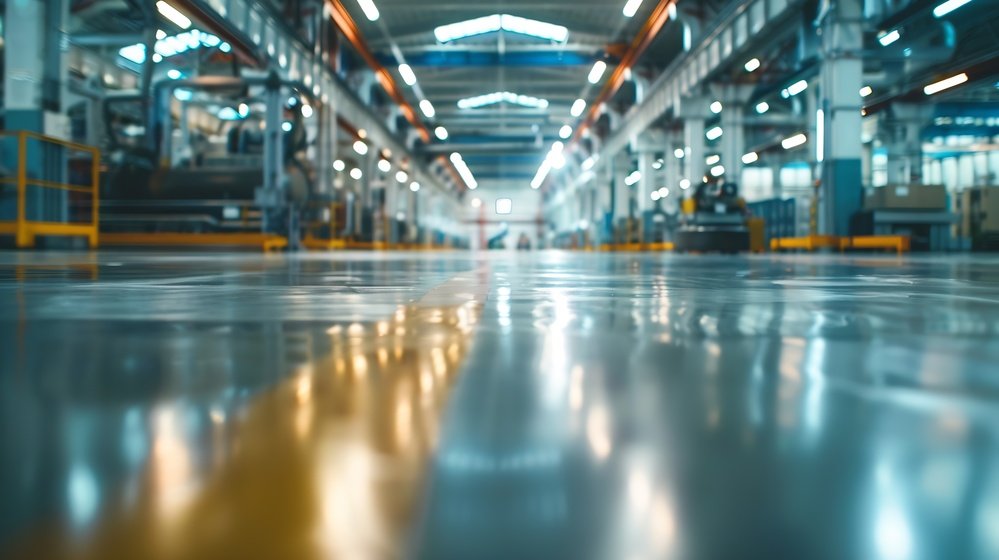Industrial environments can be pretty harsh from a cleaning standpoint. We have first-hand experience thanks to many years of providing industrial cleaning services. One thing our experience has taught us is that keeping production floors clean and safe is one of the hardest tasks on the industrial cleaning checklist.
We have decided to use the opportunity of this post to provide some general guidelines for keeping production floors clean. We will use the example of a mid-sized tool and die shop with a complete inventory of lathes, drill presses, and customized CNC machines. Tool and die provides the perfect example because it is extremely messy by nature.
The Right Tools and Solutions
Before a crew can begin working out a cleaning schedule, team members need to figure out the best tools and cleaning solutions for the job. In terms of tools, the team is looking at dry and wet mops, manual scrubbers, squeegees, and either a walk-behind or ride-on industrial floor scrubber.
Cleaning solutions are a bit more difficult to determine. Industrial environments are subject to oils, greases, and a variety of chemicals. You might even be looking at solvents. In a tool and die setting, lubricant and cooling fluid are your biggest concerns. Both are oil based. They make production floors very slippery.
Getting Workers Involved
As a company with years of experience in industrial cleaning, we have learned that individual production floor workers can make a significant difference in maintaining clean floors. For starters, it is a good idea to instruct workers to clean up spills right away. Allowing lubricants and coolants to sit on concrete floors for any length of time can allow those materials to soak in.
We have worked with machine shops that provided a wet mop and bucket at every workstation. They encouraged production workers to run a wet mop around their work areas three or four times per day. Soaking up lubricant and coolant every few hours just makes the workspace safer.
Daily Production Floor Cleaning
With the help of workers who willingly pitch in, daily production floor cleaning can be pretty routine. Wet mops take care of spills while sweeping and dry mapping can effectively handle machine shop debris. The amount of wet mopping needed at the end of the day can be kept to a minimum if routine workspace cleaning is consistent.
Busier tool and die shops may require daily wet mopping. Ideally, each worker would mop their work area at the end of the shift. The maintenance or cleaning crew would come through and wet mop common areas, including walkways and forklift lanes.
Wet Mop Frequency Depends on Production
How frequently a tool and die shop requires wet mopping really depends on production levels. A shop running a single shift with moderate production capacity might be able to get away with wet mopping every few days. On the other hand, an extremely busy shop running multiple shifts at maximum production may need to be mopped daily.
Daily mopping should minimize the need for deep cleaning. Nonetheless, a typical industrial environment needs a deep floor cleaning on a regular basis. Once per week is normal for tool and die shops. Deep cleaning is performed with the previously mentioned walk-behind or ride-on floor scrubber.
The key to keeping production floors clean in an industrial environment is consistency. Daily and weekly cleaning procedures are more than capable of keeping up with dirt, debris, and chemicals. Creating a schedule and sticking with it means less work with each cleaning. It also means cleaner floors and a safer environment.


